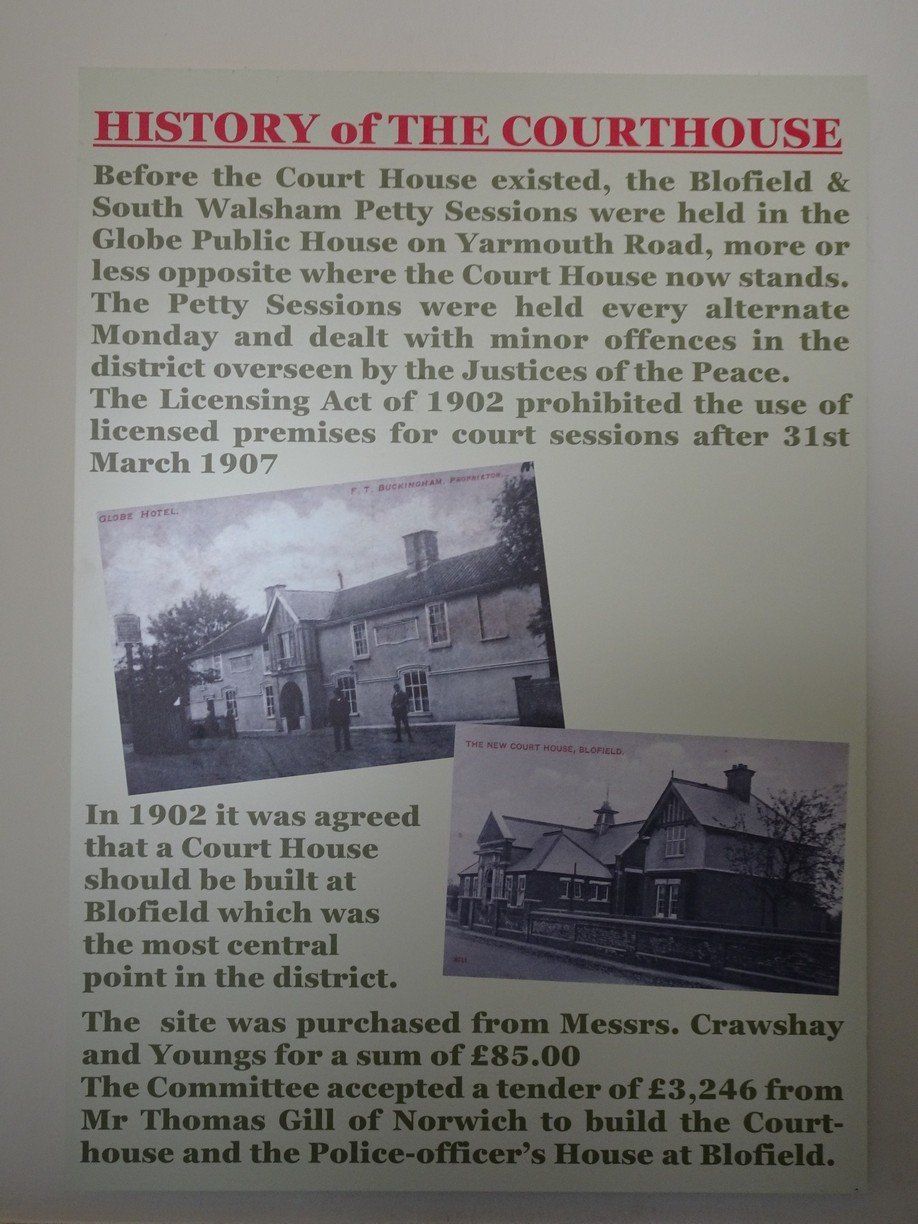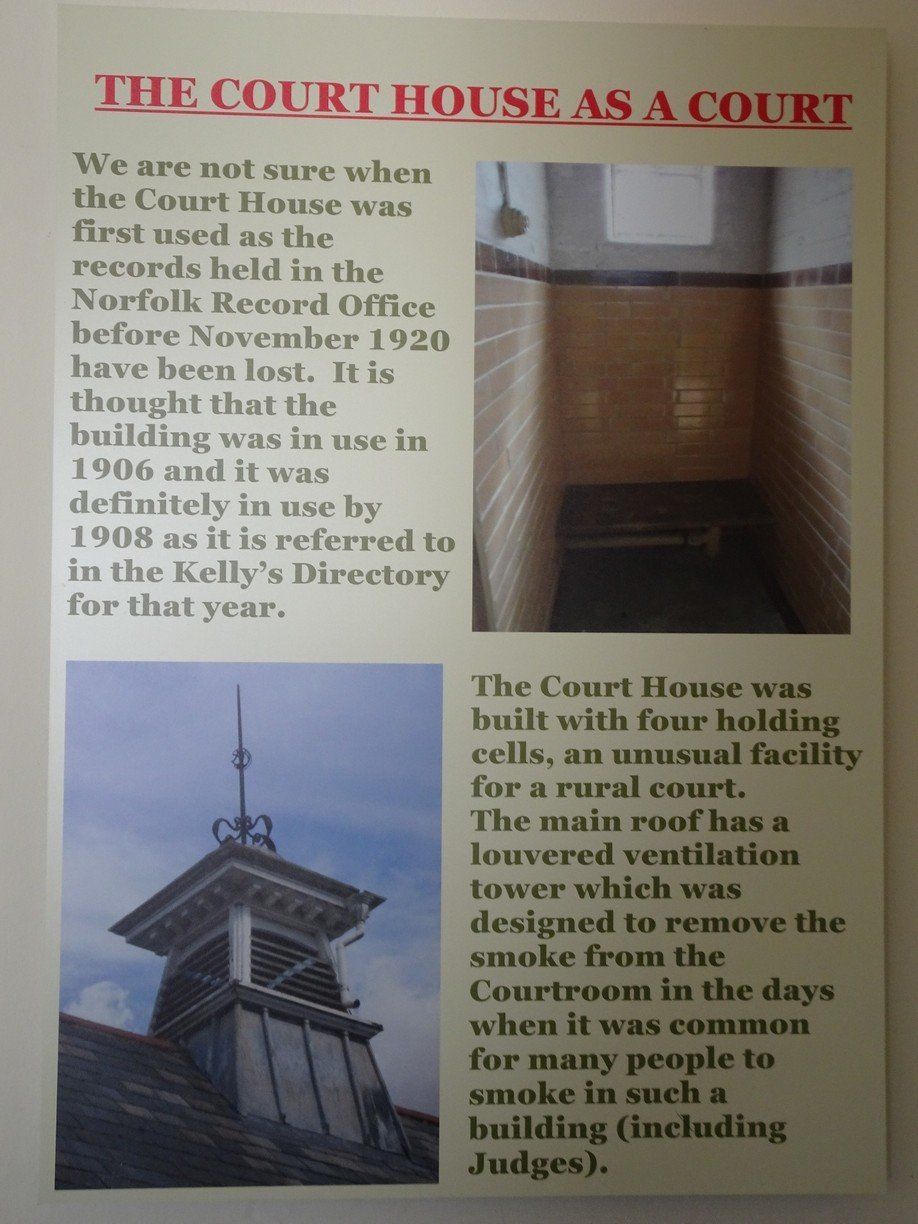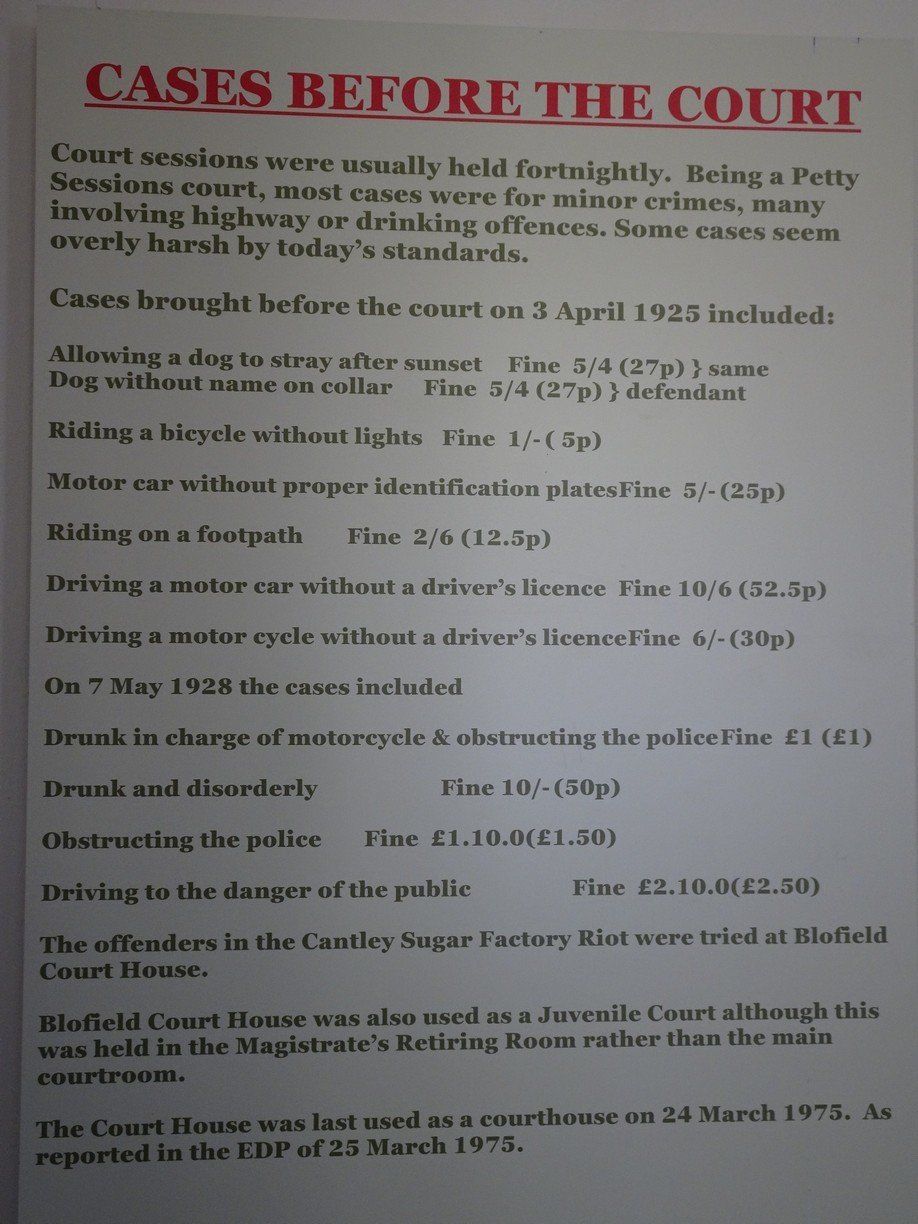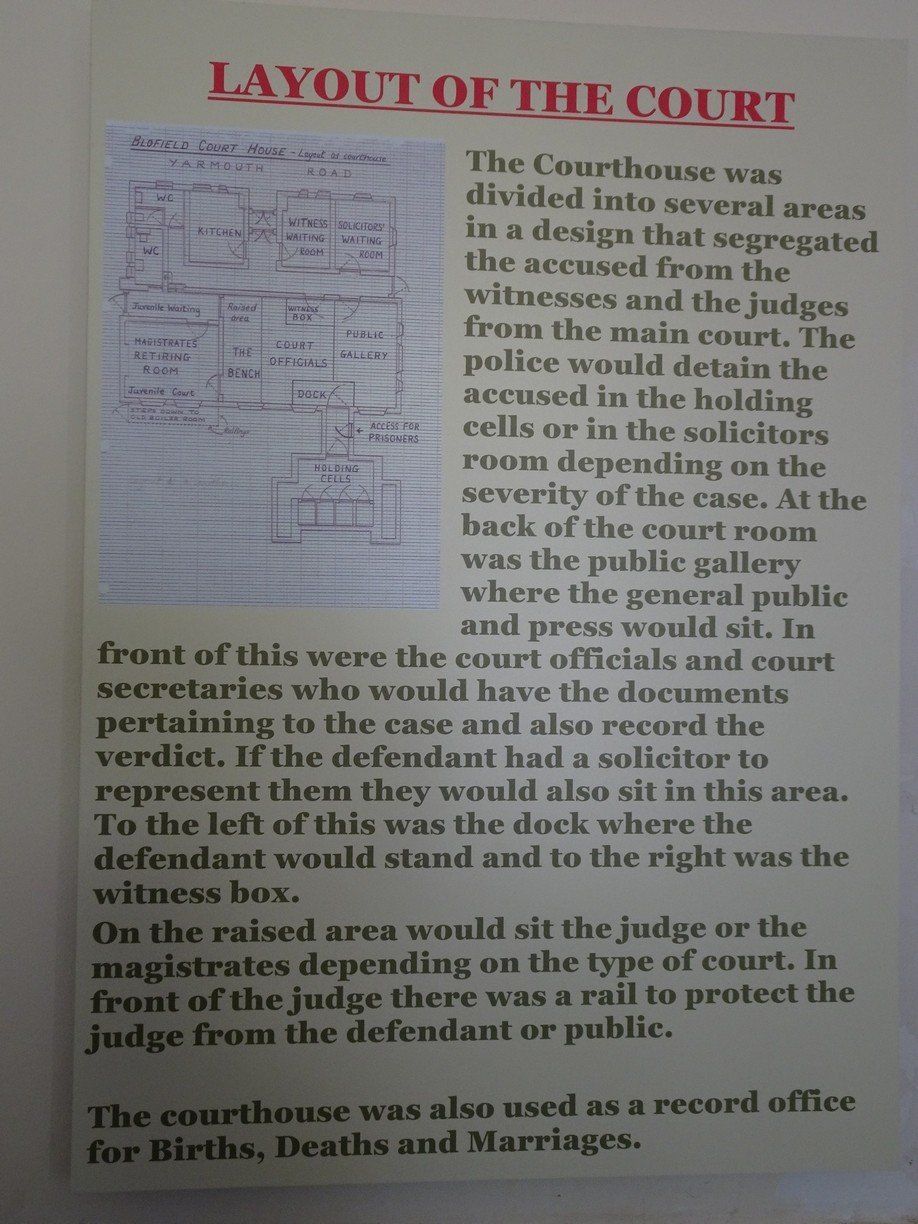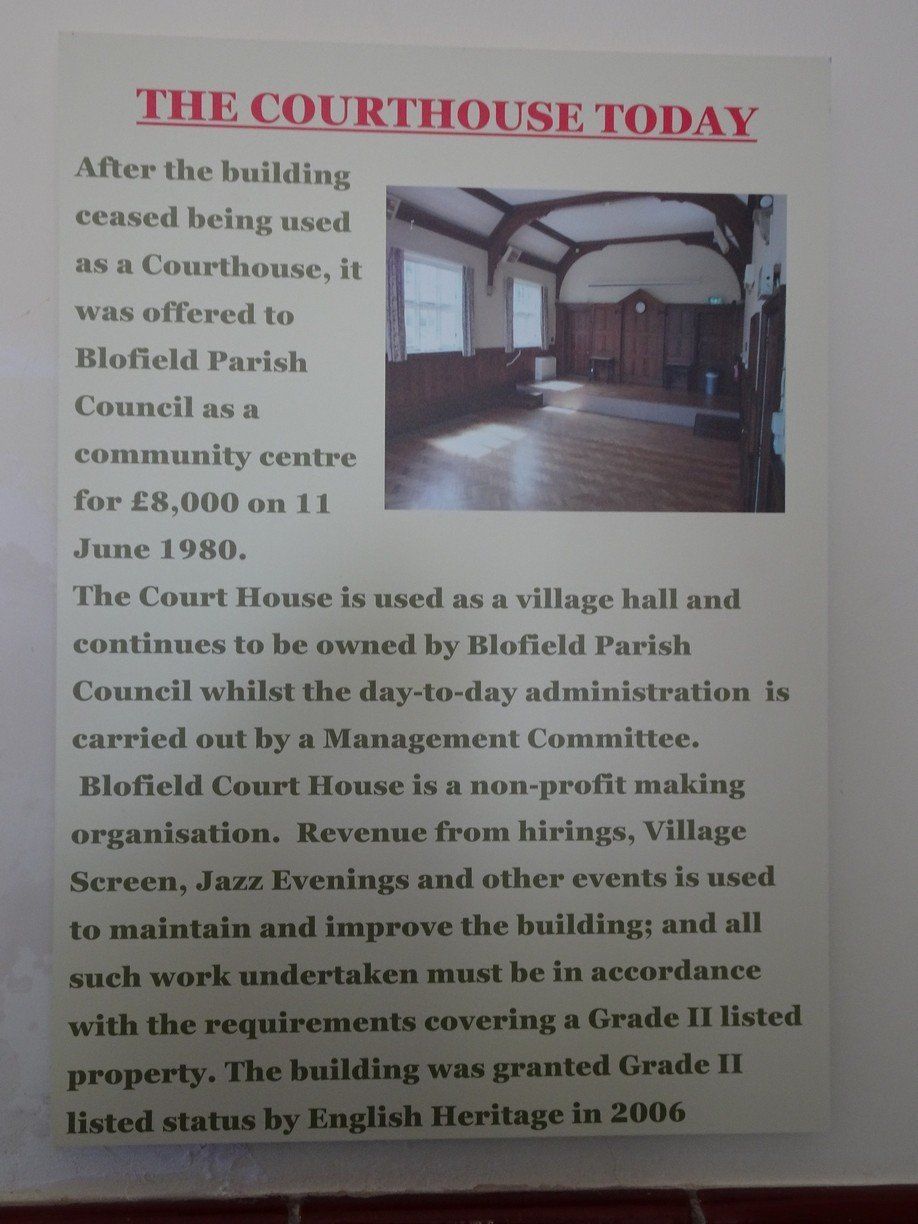History
"Blofield Court House: A Historic Gem and Vibrant Community Hub"
The Blofield Court House, located at 28 Yarmouth Road, Blofield, Norfolk, NR13 4JU, is a Grade II listed building with a rich history and vibrant community role. Below is a comprehensive overview of its history, architecture, current use, and notable events, including specific dates where available.
Construction and Opening (1905–1906)
The Blofield Court House was built in 1905 to serve as a courthouse for the Blofield Petty Sessional Division, prompted by a legal change prohibiting courts from operating on licensed premises, such as the Globe public house where Petty Sessions were previously held every alternate Monday for about a century. The courthouse was designed by County Surveyor T.B.H. Heslop and constructed by Thomas Gill of Norwich. It was officially opened on February 26, 1906, as reported by the Eastern Evening News. The opening ceremony highlighted its modern design and its replacement of the inadequate room at the Globe Inn. The first court session included cases like Walter Carter fined for obscene language and Robert Ling for riding a tumbril without reins
Judicial Role (1905–1972)
The courthouse served as a venue for Petty Sessions, handling minor offenses, while more serious cases were referred to Quarter Sessions or the Assizes. This system continued until 1972, when the Courts Act of 1971 abolished Petty and Quarter Sessions, replacing them with a single permanent Crown Court.
Grade II Listing (2006)
The building was designated a Grade II listed building in 2006 by Historic England, recognizing its architectural and historical significance as a rare, intact rural courthouse separate from a police station
She gave information and Mrs. Powell subsequently handed the ring to her. Complainant's sister-in-law deposed to stopping the prisoner on the highway at Thorpe. She accused prisoner of the theft, and subsequently he handed her the ring, saying, “I found it on the doorstep, and thought it was a brass one." She gave the ring to Mrs Powell to hand to her sister-in-law. Subsequently she handed the prisoner over to the custody of Police-Sergeant Yaxley. The officer gave evidence stating that when the prisoner was charged, he still adhered to his statement that he found the ring on the doorstep. Prisoner, when formally charged, said he picked the ring up and gave it up. He was committed for trial at the Quarter Sessions.
* Explained by St. John Pilkington – “The significance of the white gloves at the end of the first article is that it was the practice, if there was no business to put before the court at a scheduled sitting, of the Justices' Clerk to present the chairman with a pair of white gloves (signifying the 'purity' of the division apparently)”.
** A tumbril was a 2 wheeled tipping farmers cart.

